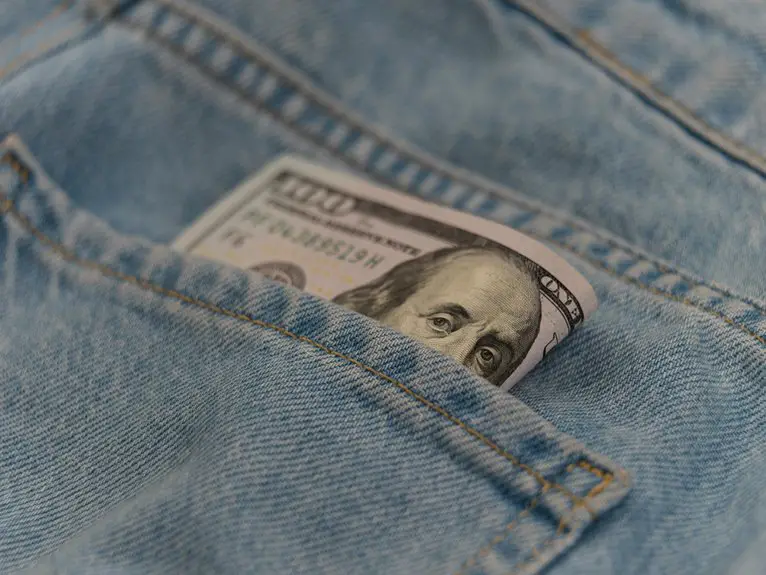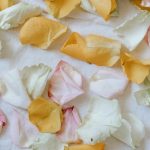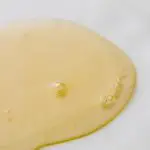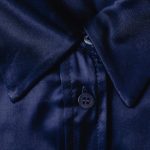You pay for Kevlar fabric based on fiber quality, manufacturing method, thickness, and its intended use. Higher-grade fibers and advanced processes like gel spinning boost strength and durability but raise costs. Thicker fabric adds protection but affects flexibility and price. Your choice hinges on balancing budget with performance needs—whether for protective gear, aerospace, or sports. Understanding these factors helps you get the best value and guarantees you pick the right Kevlar for your project’s demands.
Table of Contents
Key Takeaways
- Kevlar grade (e.g., Kevlar 29, 49, XP) significantly affects price due to varying strength and performance characteristics.
- Raw material purity and fiber consistency influence tensile strength and overall fabric quality, impacting cost.
- Advanced manufacturing methods like gel spinning increase price but enhance fabric strength and durability.
- Fabric weight and thickness correlate with durability and protection levels, affecting both cost and application suitability.
- Balancing cost with required durability and performance ensures optimal value without overspending or compromising safety.
Understanding Kevlar Fabric Composition
Kevlar fabric owes its strength to a unique composition of synthetic fibers. When you look closer, you’ll find it’s made from long chains of poly-paraphenylene terephthalamide, a type of aramid fiber.
These fibers link together tightly, giving Kevlar exceptional tensile strength and durability. You’ll notice that the tightly woven structure helps it resist stretching and tearing, which is why it’s popular in protective gear.
The tightly linked fibers create Kevlar’s remarkable strength, making it ideal for durable, protective gear.
The molecular arrangement creates strong hydrogen bonds, enhancing its stability. As you handle Kevlar fabric, you’ll feel its lightweight yet tough nature, combining flexibility with resistance.
Understanding this composition helps you appreciate why producing Kevlar requires specialized processes, influencing its overall cost and performance in various applications.
Impact of Raw Material Quality on Cost
The strength and durability you appreciate in this fabric start with the quality of its raw materials.
When you choose Kevlar, you’re paying for fibers that meet strict standards. Higher-quality raw materials mean better performance and longer life, but they also increase costs.
Here’s how raw material quality impacts price:
- Purity of aramid fibers influences tensile strength
- Consistency in fiber diameter affects fabric uniformity
- Source and processing of precursor chemicals impact quality
- Impurities or defects raise rejection rates, wasting materials
- Certification and testing add to raw material expenses
Manufacturing Processes and Their Influence on Price
Because manufacturing processes vary in complexity and technology, they greatly affect the cost of Kevlar fabric. When you choose Kevlar made with advanced methods like gel spinning, expect higher prices due to specialized equipment and longer processing times. Simpler processes might reduce costs but can compromise fabric strength or uniformity. Understanding these factors helps you balance price and quality.
| Process Type | Cost Impact | Quality Outcome |
|---|---|---|
| Gel Spinning | High | Superior strength |
| Dry-Spinning | Moderate | Good consistency |
| Wet-Spinning | Lower | Variable durability |
| Hybrid Methods | Variable | Balanced properties |
Each method influences both price and performance, so choose based on your needs.
Role of Fabric Weight and Thickness
You’ll notice that fabric weight and thickness play a big role in the cost of Kevlar.
Higher density and thicker fabrics usually mean better durability but also higher prices.
Understanding these factors helps you balance performance needs with your budget.
Impact of Fabric Density
When you consider fabric density, you’re really looking at how weight and thickness impact Kevlar’s performance and cost. Higher density means more material packed into each square inch, which directly affects protection and price.
You’ll find denser fabric offers:
- Increased tensile strength
- Better resistance to cuts and abrasions
- Enhanced ballistic protection
- Greater weight, influencing comfort and flexibility
- Higher production costs due to more raw material use
Understanding these points helps you balance protection needs against budget and application.
If you want lighter gear, you might choose less dense fabric, but that could reduce durability. Conversely, denser Kevlar fabrics cost more but deliver superior performance where safety is critical.
Keep fabric density in mind when selecting Kevlar to guarantee you get the best value for your specific needs.
Thickness and Durability Effects
Fabric density sets the stage, but the thickness and weight of Kevlar fabric play a big role in how durable and reliable the material will be over time.
When you choose thicker Kevlar, you’re getting more layers of tightly woven fibers, which means better resistance to abrasion, impact, and wear. Heavier fabric adds strength but also increases cost and weight, so you’ll need to balance protection with practicality.
Thicker Kevlar is ideal for applications demanding maximum durability, like body armor or industrial gear. On the other hand, thinner Kevlar works well when flexibility and lighter weight matter more, such as in sports equipment.
Understanding this trade-off helps you pick the right Kevlar thickness to meet your specific durability needs without overspending.
Effects of Market Demand and Supply Dynamics
Although market demand and supply constantly fluctuate, they play an essential role in determining the cost of Kevlar fabric. When demand rises or supply tightens, prices typically climb, and vice versa. You need to watch these dynamics closely because they directly impact your purchasing decisions.
Key factors influencing cost include:
Key factors influencing Kevlar fabric cost include demand shifts, raw material availability, production capacity, economic conditions, and market competition.
- Increased demand from defense and automotive sectors raises prices.
- Limited raw material availability can restrict supply, pushing costs up.
- Seasonal shifts in production capacity affect fabric availability.
- Global economic conditions influence both supply chains and buyer interest.
- Competition among manufacturers can drive prices down or stabilize them.
Technological Innovations Driving Price Changes
Since technology continuously evolves, it directly shapes the cost of Kevlar fabric by improving production efficiency and material performance. When new manufacturing techniques reduce waste or speed up processes, your expenses drop, potentially lowering prices. Likewise, innovations in fiber treatment can enhance strength and durability, adding value that justifies higher costs. Staying updated on these trends helps you understand pricing fluctuations better.
| Innovation | Impact on Cost | Benefit to You |
|---|---|---|
| Automated Weaving | Lowers labor costs | More consistent fabric quality |
| Nano-coating Tech | Increases material cost | Enhances fabric durability |
| Recycling Methods | Reduces raw material cost | Supports sustainability |
| Advanced Polymerization | Raises R&D expenses | Improves fiber strength |
| Energy-efficient Equipment | Cuts energy bills | Lowers overall production cost |
Variations in Kevlar Grades and Their Pricing
You’ll notice that different Kevlar grades have unique properties affecting their cost.
Factors like strength, weight, and intended use play a big role in pricing variations.
Understanding these differences helps you make smarter purchasing decisions.
Kevlar Grade Differences
When choosing Kevlar fabric, understanding the differences between its various grades is essential because each grade offers distinct performance characteristics and price points.
You’ll find that the grade you pick directly affects durability, weight, and cost.
Here’s a quick look at common Kevlar grades:
- Kevlar 29: Standard grade, great for general use and affordable.
- Kevlar 49: Higher tensile strength, often used in aerospace.
- Kevlar 129: Offers enhanced cut resistance and lighter weight.
- Kevlar XP: Designed for ballistic protection with superior toughness.
- Kevlar AP: Advanced grade with maximum strength and heat resistance.
Knowing these differences helps you select the right grade for your project, balancing performance needs and budget efficiently.
Price Impact Factors
Although Kevlar’s performance varies by grade, its price shifts even more noticeably based on these differences. When you choose a higher-grade Kevlar, like Kevlar 129, you’ll pay more because it offers superior tensile strength and durability.
Lower grades, such as Kevlar 29, cost less but provide adequate protection for less demanding uses. The fabric’s weave and thickness also influence pricing—you’ll notice tighter weaves and heavier weights drive costs up.
Additionally, specialty Kevlar variants with added chemical or heat resistance come with premium prices. When selecting Kevlar, consider your specific needs carefully; opting for the right grade guarantees you don’t overspend on unnecessary features or compromise on safety.
Understanding these price impact factors helps you get the best value for your investment.
Applications and Their Influence on Fabric Selection
Because different applications demand unique performance characteristics, selecting the right Kevlar fabric depends heavily on its intended use.
You’ll want to evaluate how the fabric’s strength, flexibility, and weight align with your project’s needs. For instance, Kevlar used in body armor prioritizes high tensile strength and impact resistance, while automotive parts may require heat resistance and durability.
Here are some key application areas influencing fabric choice:
- Protective gear: Emphasizes cut and abrasion resistance
- Automotive components: Focuses on thermal stability and lightweight properties
- Aerospace: Requires high strength-to-weight ratio and durability
- Sports equipment: Needs flexibility and impact absorption
- Industrial uses: Often demands chemical resistance and toughness
Balancing Cost With Durability and Performance
Striking the right balance between cost, durability, and performance can make or break your choice of Kevlar fabric. You want a material that withstands wear and tear without breaking your budget.
While higher-grade Kevlar offers superior strength and longevity, it comes at a premium price. On the other hand, more affordable options might save money upfront but may degrade faster, leading to replacement costs.
Assess your specific needs—whether for protective gear, automotive parts, or industrial applications—and prioritize features accordingly. By carefully weighing these factors, you guarantee you’re not overspending on unnecessary performance or settling for fabric that won’t last.
Ultimately, smart choices here optimize both cost efficiency and the fabric’s functional value.
Frequently Asked Questions
Where Can I Buy Kevlar Fabric in Small Quantities?
Like finding a rare gem, you can buy Kevlar fabric in small quantities from specialty online stores, fabric suppliers, and marketplaces like Etsy or Amazon. Don’t forget to check out local textile shops for limited stock options.
How Should Kevlar Fabric Be Stored to Maintain Quality?
You should store Kevlar fabric in a cool, dry place away from direct sunlight and moisture. Keep it sealed in airtight packaging to prevent exposure to dust, chemicals, and humidity, preserving its strength and quality over time.
Can Kevlar Fabric Be Recycled or Reused?
Imagine a firefighter’s worn Kevlar gear repurposed into durable backpacks. You can recycle Kevlar by shredding and reforming it or reuse it in new products, reducing waste while honoring its strength and history.
What Safety Precautions Are Needed When Handling Kevlar Fabric?
When handling Kevlar fabric, you should wear gloves and a dust mask to avoid irritation from fibers. Work in a well-ventilated area, and avoid cutting or sanding without proper safety gear to prevent airborne particles.
Are There Eco-Friendly Alternatives to Kevlar Fabric?
You can consider eco-friendly alternatives like hemp, flax, or organic cotton fabrics, which are biodegradable. Recycled polyester and bio-based aramid fibers are also emerging, offering strength with less environmental impact compared to traditional Kevlar.
- Where to Buy Sherpa Suede Fabric - July 12, 2025
- How to Draw or Illustrate the Texture of Suede Fabric - July 12, 2025
- What Is Baseball Suede Leather Fabric? - July 12, 2025







